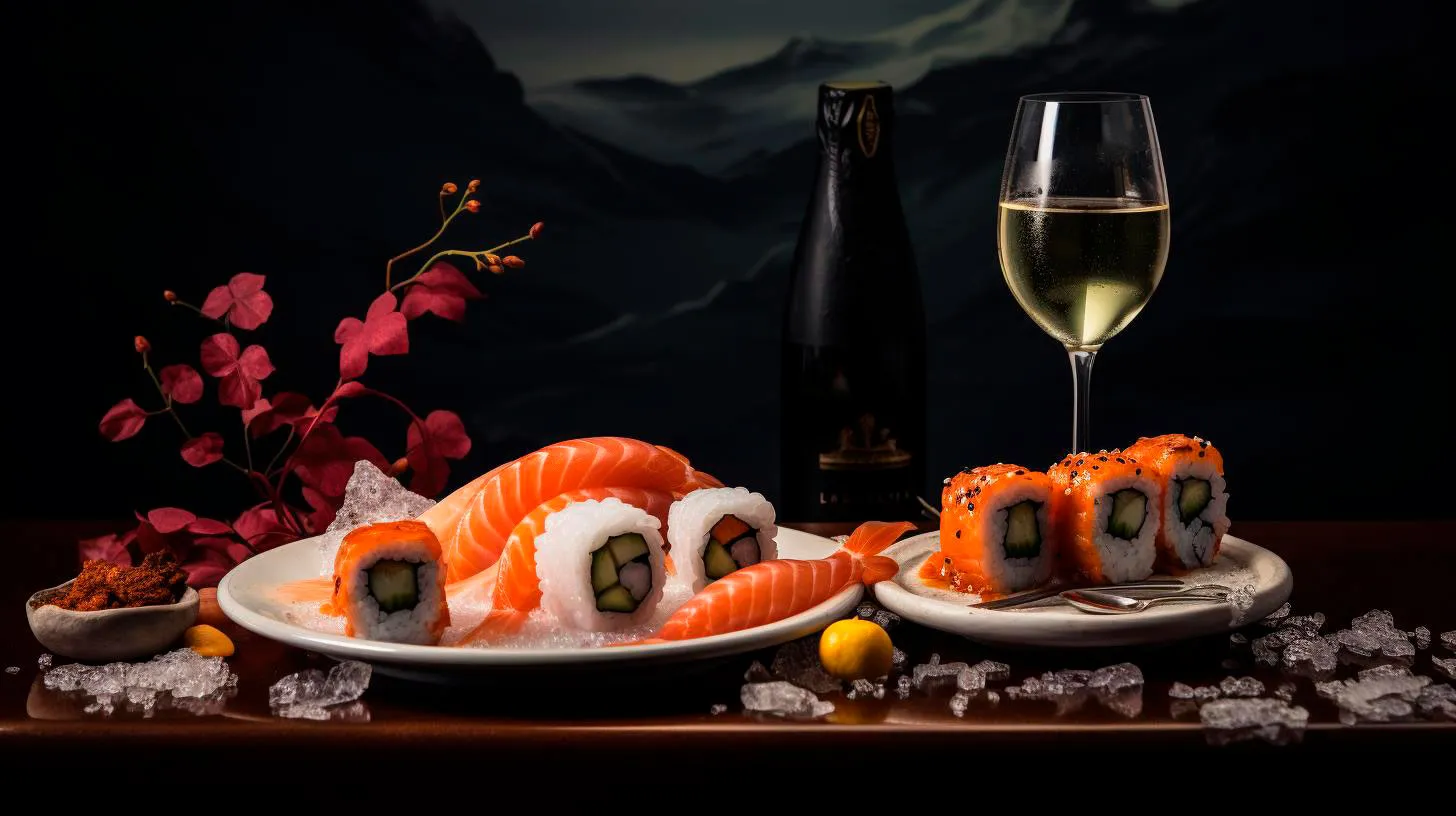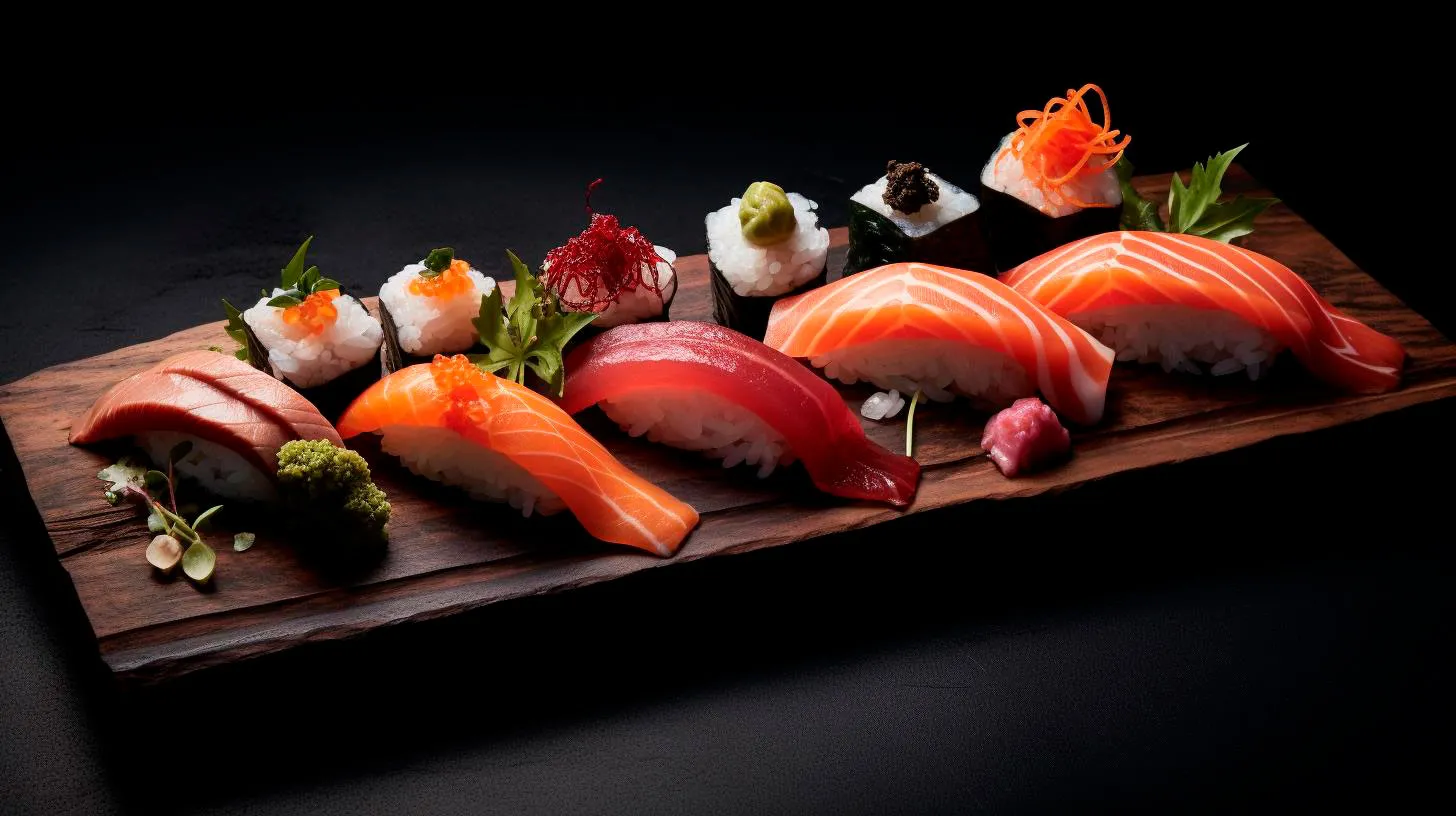The Art of Bonsai: Cultivating Nature as an Art Form
Building on your knowledge of bonsai cultivation, this article will delve into the techniques and principles behind growing a bonsai tree, and explore the rich history and benefits of this art form.
The History of Bonsai
Originating in ancient China over a thousand years ago, bonsai has since become synonymous with Japanese culture. The art form evolved and was refined in Japan, where it developed its distinctive style and aesthetic. Today, bonsai is popular across the globe, captivating enthusiasts and collectors alike.
The Principles of Bonsai Cultivation
Cultivating a bonsai tree requires patience, dedication, and a deep understanding of horticultural principles. Here are some key techniques to help you grow and maintain your bonsai:
- Pruning: Regular and precise pruning helps maintain the desired shape and size of the tree, while also balancing the foliage structure. This technique encourages new growth and enhances the tree’s aesthetic appeal.
- Wiring: Wiring is a delicate technique used to shape and position the branches of the bonsai tree. By wrapping copper or aluminum wire around the branches, you can guide their growth and create a more harmonious form.
- Repotting: Bonsai trees require periodic repotting to prevent root-bound growth and ensure proper nutrient absorption. Repotting is often done every two to three years, providing an opportunity to prune the roots and refresh the soil mix.
- Watering and Fertilizing: Maintaining the right balance of watering and fertilizing is crucial for the health and growth of your bonsai tree. Over-watering can lead to root rot, while under-watering can cause dehydration. Similarly, using a balanced fertilizer ensures optimum nutrition for the tree.
- Styling: Styling focuses on creating a balance between natural form and artistic expression. Different styles, such as formal upright, informal upright, slanting, cascade, and semi-cascade, offer various aesthetic choices to bonsai enthusiasts.
Bonsai trees come in various types, each with its own unique characteristics and care requirements. From classic choices like the Juniper and Pine to more exotic options such as the Ficus or Japanese Maple, the choice of tree depends on your preference, climate conditions, and level of experience.
The Benefits of Bonsai
Embracing the art of bonsai offers a multitude of benefits beyond the sheer beauty of these miniature marvels. Here are some key advantages and takeaways:
- Stress Relief: Engaging in bonsai gardening provides a therapeutic escape from the pressures of daily life. The mindful process of nurturing a bonsai tree promotes relaxation and reduces stress levels.
- Connection with Nature: Bonsai cultivation fosters a deep connection with nature, enabling enthusiasts to appreciate the beauty of trees and the environment. It serves as a reminder of the importance of preserving nature in our modern world.
- Cultivating Patience: Growing a bonsai tree is a long-term commitment that requires patience and dedication. This art form teaches practitioners the value of persistence and instills a sense of accomplishment as they witness the progress of their creation over time.
- Enhancing Aesthetics: Bonsai trees add a touch of elegance and serenity to any space. Whether placed indoors or outdoors, these miniature trees become captivating focal points, sparking conversations and admiration.
- Creative Expression: Bonsai provides an artistic outlet for self-expression. Through careful styling and shaping, bonsai enthusiasts can create unique and visually striking compositions while putting their own creative spin on this ancient art form.
According to a recent study, the calming effects of bonsai can reduce blood pressure and cortisol levels, promoting overall well-being. It’s no wonder that bonsai has gained immense popularity among hobbyists and nature enthusiasts worldwide.
In Conclusion
Bonsai truly embodies the harmonious convergence of nature and art. As you embark on your bonsai journey, remember to master the essential techniques of pruning, wiring, repotting, and styling. Embrace the therapeutic benefits of bonsai cultivation, and let your creativity flourish as you sculpt these miniature living artworks.
Discover the profound satisfaction of immersing yourself in the captivating world of bonsai. Cultivate nature as an art form, and experience the tranquility and fulfillment it brings to your life.
Sushi: A Culinary Art in Japanese Culture
A Brief History of Sushi
Sushi dates back to ancient times, with its origins found in Southeast Asia. The concept of preserving fish in fermented rice was introduced to Japan around the 8th century, and over time, sushi evolved into the form we know today. Initially, it was primarily consumed as a street food before gaining popularity as an artful dish in formal dining settings.
The Art of Sushi Making
Creating sushi is not just about assembling ingredients; it’s an art that requires years of practice, precision, and attention to detail. From selecting the freshest fish to creating the perfect balance of flavors, sushi chefs, known as Itamae, dedicate their lives to mastering this craft. The artistry involved in shaping the rice, cutting the fish, and delicately combining the various components is what sets sushi apart from other cuisines.
Some key techniques used in sushi making include:
- Sushi Rice: The foundation of great sushi lies in the perfect sushi rice. It is carefully seasoned with rice vinegar, sugar, and salt, giving it a distinct tangy flavor.
- Nigiri: Nigiri sushi is composed of a small mound of seasoned rice, typically topped with a thin slice of raw fish. The chef must ensure that the fish complements the rice and is sliced with precision.
- Maki: Maki sushi consists of vinegar-seasoned rice and various ingredients wrapped in seaweed. The chef rolls the ingredients tightly using a bamboo mat, slices it into bite-sized pieces, and presents it beautifully.
- Sashimi: Unlike other types of sushi, sashimi doesn’t involve rice. It is made by skillfully cutting fresh, high-quality fish into thin slices, highlighting the natural flavors of the fish.
The Benefits of Eating Sushi
Sushi not only tantalizes your taste buds but offers several health benefits as well. Let’s explore some of the advantages of including sushi in your diet:
- Rich in Omega-3 Fatty Acids: Certain types of fish used in sushi, such as salmon and tuna, are excellent sources of omega-3 fatty acids, which are known for their heart-healthy properties.
- Low in Calories: Sushi is generally low in calories compared to other Western-style dishes. Opting for sushi as a meal helps in maintaining a balanced diet.
- Good Source of Protein: Fish used in sushi is a fantastic source of high-quality protein. Protein is essential for muscle growth, tissue repair, and overall well-being.
- High in Vitamins and Minerals: Sushi often includes vegetables like avocado and cucumber, providing a good dose of essential vitamins and minerals needed for optimal health.
The Cultural Significance of Sushi in Japan
In Japan, sushi is deeply rooted in the country’s culture and traditions. It is considered an art form that showcases the harmony between nature, food, and the people indulging in it. Sushi restaurants in Japan are renowned for their attention to detail, elegant presentation, and impeccable service. Indeed, enjoying sushi in Japan is much more than just a meal; it is an immersive cultural experience that every food enthusiast should embrace.
Key Takeaways
Sushi is not just a dish; it’s a testament to the artistry and dedication of the Itamae. Here are some key takeaways about sushi:
- Sushi is a traditional Japanese delicacy with a long history dating back centuries.
- The art of sushi making requires precision, attention to detail, and a deep understanding of ingredients.
- Various types of sushi, such as nigiri, maki, and sashimi, offer a range of flavors and textures.
- Including sushi in your diet can provide multiple health benefits, including omega-3 fatty acids and high-quality protein.
- Sushi represents the cultural significance and artistry that Japan is known for.
Next time you savor a piece of sushi, take a moment to appreciate the craft behind it and the centuries of tradition it represents. Explore the wide variety of sushi options and allow yourself to be transported into a world where food truly becomes an art!
Exploring the Cultural Significance of Nature in Japanese Art: Sushi, Bonsai, and Ikebana
In this article, we delve into the cultural significance of nature in Japanese art, focusing on three prominent art forms: sushi, bonsai, and ikebana.
The Art of Sushi: Harmony on a Plate
Sushi, a globally acclaimed culinary masterpiece, is far more than a delicious dish. It is a work of art that embodies the Japanese philosophy of harmony with nature. To prepare sushi, skilled chefs carefully select fresh and seasonal ingredients such as fish, vegetables, and rice. The presentation of sushi is meticulously crafted, aiming to resemble the colors and elements found in nature.
Key Takeaways:
- Sushi exemplifies the Japanese concept of harmony with nature.
- Ingredients are carefully selected to reflect seasonal changes.
- Presentation mimics the beauty of nature.
Bonsai: Capturing the Essence of Nature
Bonsai, the art of cultivating miniature trees, is another prime example of Japanese art’s connection to nature. The meticulous process of bonsai involves shaping and pruning trees to resemble their larger counterparts found in the wild. With techniques passed down through generations, bonsai artists aim to encapsulate the essence of nature in their creations.
Aside from the aesthetic aspect, bonsai is deeply rooted in spirituality and philosophy. It represents the balance between human intervention and respect for the natural world, reminding us of the fleeting nature of life. Bonsai necessitates dedication, patience, and an intimate understanding of each tree’s unique characteristics.
Key Takeaways:
- Bonsai is an art form that replicates nature in miniature form.
- It requires patience, dedication, and a deep understanding of trees.
- Bonsai symbolizes the delicate balance between human intervention and nature.
Ikebana: Harmonizing Life and Nature
Ikebana, the Japanese art of flower arrangement, is a refined practice that embodies a profound respect for nature’s innate elegance. Ikebana is not merely about arranging flowers but about creating a harmonious composition that captures the essence of life and the seasons. It involves carefully selecting flowers, branches, and other natural materials to convey a story or evoke specific feelings.
The philosophy of ikebana extends beyond aesthetics. It emphasizes the relationship between human beings, nature, and time. The intentionally sparse arrangements accentuate empty space, fostering an appreciation for the beauty of both the flowers and the void. Ikebana seeks to inspire contemplation, providing a moment of tranquility in our fast-paced world.
Key Takeaways:
- Ikebana is an art that evokes harmony between flowers, branches, and natural elements.
- It reflects the relationship between humanity and the passage of time.
- Ikebana encourages contemplation and serenity.
Conclusion
The cultural significance of nature in Japanese art is unmistakable, seen through the lens of sushi, bonsai, and ikebana. These artistic traditions act as gateways to connect with the beauty and spirituality of the natural world. As Japanese art continues to inspire and captivate audiences worldwide, we are reminded of the importance of preserving and cherishing the environment.
By immersing ourselves in the profound cultural practices of sushi, bonsai, and ikebana, we open our eyes to the delicate balance between humans and nature. These art forms not only symbolize Japan’s artistic prowess but also serve as powerful reminders of the interconnectedness between ourselves and the natural world.
Ikebana: The Harmony of Flowers in Japanese Aesthetics
The Origins of Ikebana
Ikebana, meaning “living flowers,” traces its roots back to the 6th century when Buddhism was introduced to Japan. Monks began incorporating floral offerings into their religious ceremonies, giving birth to the practice of Ikebana. Over time, this concept evolved into an art form that was accessible to the general public, becoming an integral part of Japanese culture.
Unlike traditional Western floral arrangements, Ikebana is not just about creating visually pleasing compositions. It aims to convey the harmony between nature and human expression, focusing on minimalism, asymmetry, and balance. The art form highlights the unique beauty of each flower, branch, and leaf, emphasizing their relationship within the overall arrangement.
Techniques and Styles
Ikebana encompasses a wide range of techniques and styles, with three major schools being the most prominent: Ikenobo, Sogetsu, and Ohara. Each school has its own unique philosophy and approach to floral arrangement.
- Ikenobo: Established in the 15th century, this school follows strict rules and emphasizes traditional forms. It focuses on balance and symmetry, often utilizing vases with a narrow opening.
- Sogetsu: Founded in the early 20th century, Sogetsu is known for its experimental approach. It allows for more freedom in materials, incorporating unconventional elements such as wire, fabrics, and even non-natural items.
- Ohara: As the newest school, Ohara is known for its innovative styles. It encourages the use of natural materials and emphasizes the representation of landscapes and seasonal themes.
Despite variations in technique and style, all Ikebana schools share the same core principles of minimalism, asymmetry, and capturing the essence of natural beauty.
Ikebana and Japanese Aesthetics
Japanese aesthetics are deeply intertwined with Ikebana, as it reflects the fundamental principles of Japanese culture. The art form embodies the traditional aesthetic concepts of Wabi-sabi and Ma.
Wabi-sabi: This aesthetic centers around finding beauty in imperfection, transience, and simplicity. Ikebana’s minimalistic compositions and emphasis on the unique characteristics of each flower perfectly align with the wabi-sabi philosophy.
Ma: Ma represents the concept of negative space, emphasizing the importance of emptiness and silence. Ikebana makes use of this concept, strategically leaving empty spaces within the arrangement to create a sense of harmony and balance.
Key Takeaways
- Ikebana is a traditional Japanese art form that goes beyond simply arranging flowers.
- It embodies the principles of minimalism, asymmetry, and portraying the unique beauty of natural elements.
- Ikebana originated from Buddhist practices and evolved into an art accessible to all.
- Major Ikebana schools include Ikenobo, Sogetsu, and Ohara, each with its own distinct style.
- The art form reflects Japanese aesthetics, particularly the concepts of wabi-sabi and ma.
As you delve into the captivating world of Ikebana, you’ll not only gain an appreciation for floral artistry but also an understanding of the profound connection between nature and human expression. This ancient art form continues to inspire and captivate individuals around the globe, showcasing the beauty of simplicity, balance, and harmony.



